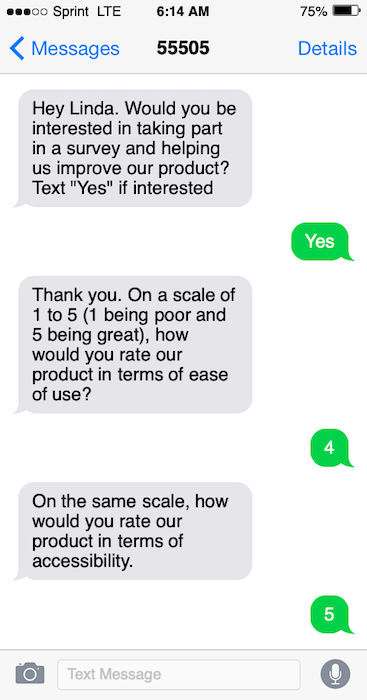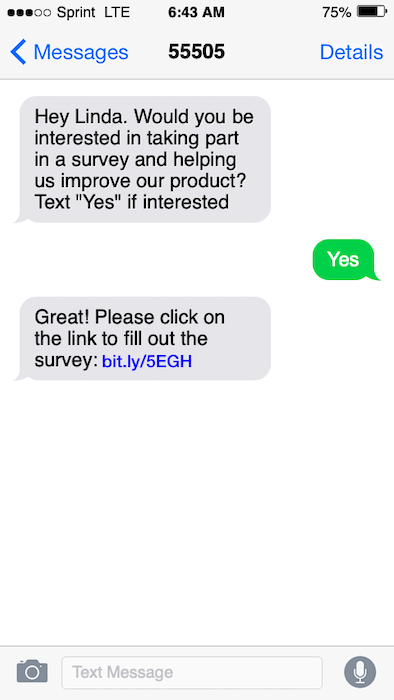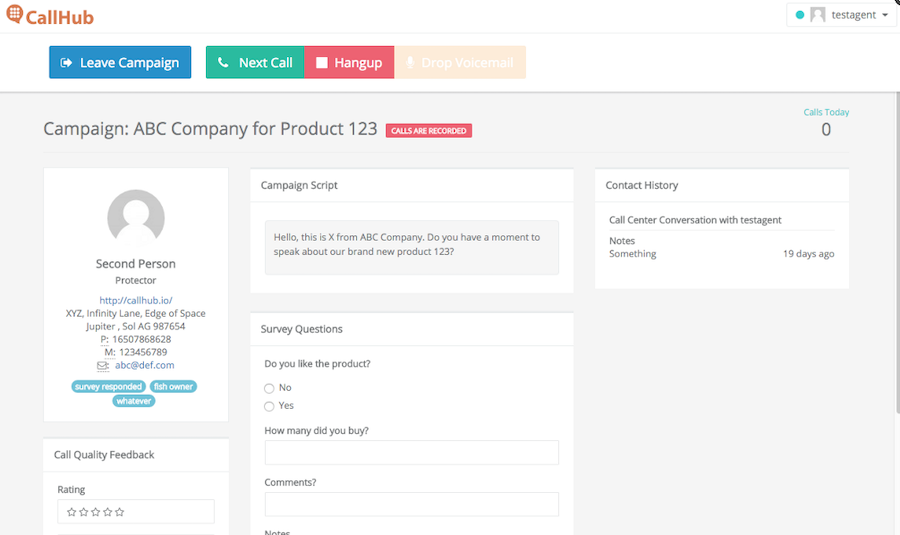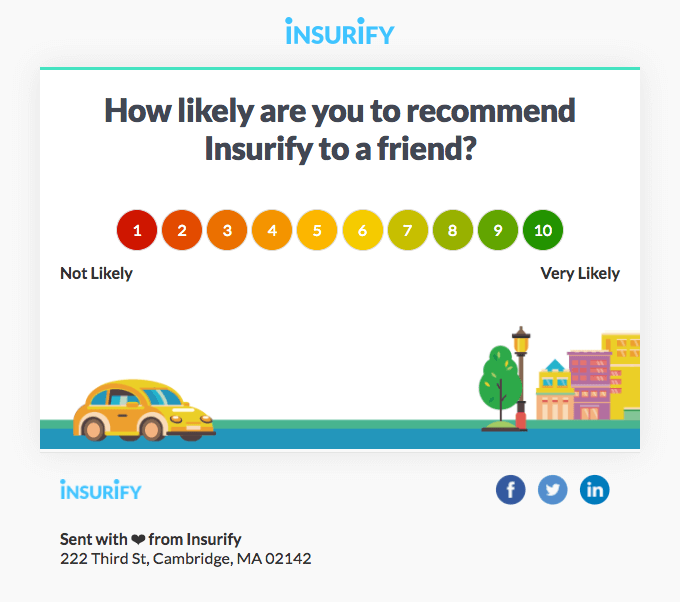Table of Contents
Recently, I came across a shocking stat about survey response rates.
Nearly 75% of surveys fail to get the minimum response numbers.
This is shocking given the fact that organizations often rely on survey insights to make important industry decisions.
This problem can be attributed to two major challenges:
- Distribution: Your surveys are not reaching enough (or the right) people for you to get the required responses.
- Motivation: You’re not able to motivate people enough to fill out the survey.
I’ve covered how you can overcome the second challenge in the post on “How to get people to take a survey.”
In this post, I’ll be focusing on the first barrier that you need to overcome, i.e., survey distribution. We’ll go over survey distribution methods to reach out to a majority of your target audience.
What is survey distribution?
Survey distribution is the process of sending out surveys through different mediums to your target audience and collecting their responses. No rocket science here!
There are two primary ways to distribute your surveys:
- Online: Distributing surveys through online channels like websites, social media, etc.
- Offline: Conducting surveys in-person, over the phone, etc.
You can use either medium for survey distribution. However, I recommend that you use a combination of both to maximize your reach.
Why?
Because both online and offline distribution methods have distinct advantages that you should leverage. With online distribution, you can reach out to a larger group with no limit to geographies. On the other hand, offline survey distribution methods give it a more personal touch and also cover those individuals who aren’t as tech-savvy.
If you lack the resources to leverage multiple distribution methods under both categories (that I’ll talk about in the next section), you can prioritize a couple of highly effective ones and move ahead.
Obtaining consent
I really hope this flashy section caught your attention because it’s important. It’s something that more people should talk about, but no one does.
Whether you choose to send out your surveys through online or offline mediums, you have to ensure that you have the respondent’s consent, especially if you’re going to ask for personal details.
But, keep in mind that just adding a consent question at the beginning of the survey is not enough. You have to provide them with a little more information about the survey and certain disclaimers. To be on the safe side, make sure you follow these guidelines at the very least:
- Provide the name of the person or organization conducting the survey.
- Ask respondents to sign a consent statement that outlines your data transfer practices, privacy policy, or any other relevant information.
- Provide respondents with the option to withdraw from the survey mid-way.
- Give the details and terms and conditions of any incentives, if you’re offering any.
- Make it clear that consent is implied by participating in the survey. (Let’s be honest, no one really reads the terms and conditions or other legal statements, so make sure you highlight this.)
Popular survey distribution methods
Finally, let’s get into the details of the part you were promised. I’ll talk about survey distribution methods for both online and offline channels, so you don’t walk away due to a lack of options.
Offline survey distribution methods
Let’s be clear on what offline channels entail to avoid any confusion. Offline channels are those that don’t require the participant to have access to the internet. They may need access to a phone and a network connection (for calls or SMS) but no data.
Here are some popular offline survey distribution options that you can use.
1. In-person interviews
In-person interviews entail approaching people and interacting with them one-to-one to get answers to your survey questions. Generally, you can either visit them at home, approach them on the street, or even invite them to your office.
The major benefits of in-person interviews are:
- You get to observe their body language, tone, and facial expressions: This can potentially provide you with much more valuable feedback. For example, a participant may say that they are fine with the gentrification, but their expression and tone may suggest otherwise. In such cases, surveyors can note their answers but also make note that the participant is unsure about it, and you can group these people separately to analyze why the lack of surety.
- Participants may not have to fill in their answers: Since you’re interviewing them, you can write the answers for them. This eases their effort, which tends to improve response rates.
What do you need for it?
Before you head out conducting interviews, make sure you’re equipped with the following:
- A tablet or survey form: To collect and record responses.
- Questionnaire: The questions you will be asking people. Make sure that they include both open and closed-ended questions that give relevant data without restricting the opinions of the respondent.
- Trained personnel: People who will be conducting these interviews. Make sure they are trained in cold approaches and observing facial expressions, tone changes, etc., and understand what the respondent truly wants to convey.
2. Mail-in surveys
Direct mail is still an effective method of communication that organizations often ignore. It works quite well as a survey distribution method too. In fact, mail-in surveys have a 53% response rate which is much higher than emails which is just 33%.
The process of sending out a survey by mail is quite simple. All you have to do is to draft the mail, pack it up in an envelope with a reply device, and send it out to the respective addresses. People can fill the survey and send it back to you.
Keep in mind that you may have to follow-up for non-respondents and push them to get back to you. You can either send text follow-ups or connect with them over a call or email.
Once you get back these surveys, note down the answers manually to analyze the insights.
What do you need for it?
To distribute surveys by mail, here’s what you will need:
- Mailing addresses: For obvious reasons. Make sure the details are updated to ensure you’re sending the surveys to the right people.
- Response device: Include a response device (which typically includes a stamped-out return envelope with the return address on it), so it’s easier to send the completed survey back to you.
- Printing tech: You can either hire a third-party printer to print out the letters for you or do it in-house. If you’re planning for the latter, here’s a resource that you can refer to Print letters with mail-merge.
3. SMS surveys
SMS surveys are surveys conducted over text messages. While they don’t require an internet connection, participants will need access to a mobile phone and a network.
The advantage of distributing surveys over SMS is that they have a quick turnaround time, which is just over five minutes, apart from a response rate of 31%.
Moreover, it’s easy to automate the entire process, so you can start gathering insights in very little time compared to other methods.
For SMS survey distribution, here’s what you’ll need to do:
- Select a mass texting solution to set up text autoresponders and collect responses.
- Sync your CRM with the tool to collect and store responses and gather insights.
- Create a conversation flow to collect the insights that you need.
- Upload your contact list and schedule your texts.
If you’re still confused about how this works, here’s an example of a similar conversation flow.

What do you need for it?
To shoot out SMS surveys, here’s what you’ll need in your arsenal.
- Mass texting solution: To set up the conversation flow and schedule the responses.
- CRM: To collect and store the responses and get a quick analysis.
- Mobile numbers: Your audience’s mobile numbers that you’ll send out texts to.
Don’t know how you can get mobile numbers from your prospects? Check out this article on growing your SMS marketing list for some valuable insights.
SMS Surveys as an online distribution channel
Before we venture into the next option, let me draw your attention to this unique advantage of SMS surveys.
While SMS surveys are a popular offline channel, they can double as an online channel as well with one small tweak.
Rather than sending the questions as auto-responses after the participant replies to the first question, you can simply send an automated text message containing a link to your survey. This is how your conversation will now look.

You can use this in case your target audience may not be too open to responding to your texts and spending on outgoing texts.
4. Telephone surveys
If you’re feeling a little old school, you could call people and get their responses to your questions too. Calling is a great alternative to in-person interviews and has similar benefits.
Conducting telephone surveys is quite straightforward. All you need to do is:
- Prepare a calling script for the conversation with the questions you wish to ask.
- Call your target audience and request their answers.
- Note down their responses and enter them into your CRM for analysis.
Using a call center software will come in handy here. Before I tell you why, here’s a sample image of what a survey call using a call center tool looks like.

As you’ll notice, the script is displayed on the screen, making it easier for you to navigate the conversation. Moreover, you can simply note the responses (either select options or take notes) within the calling dashboard itself.
This data is automatically transferred to your CRM, eliminating the need for manual data entry. Doesn’t that sound like a more efficient way to conduct surveys?
What do you need for it?
Here’s what you’ll need for your telephone surveys:
- Script: To guide the conversation and ensure you cover all crucial points.
- CRM: To store the responses and get a quick analysis and other insights.
- Call center software: If you’re opting for the more efficient way of conducting a phone survey. Else, a normal phone would do.
- Phone numbers: These could either be mobile or landline numbers. It wouldn’t matter since you’re calling them. Just make sure you have their consent before calling.
Be sure to maintain compliance when making these outbound calls. You wouldn’t want to get caught in a legal battle, right? Learn more about how to stay compliant here: Staying compliant in your calling outreach.
Online survey distribution methods
Digital survey distribution has become more popular in recent years, and for good reasons. Online channels have a huge reach and are also cost-effective because you can send out surveys at a click of a button.
Here are some popular online survey distribution methods you can use.
1. Email surveys
Emails are one of the most popular channels of survey distribution, primarily because of their ease of use. Moreover, with emails, you also get the opportunity to enhance your survey’s appeal with visuals and graphics. Here’s an example:

Email surveys typically comprise links that redirect readers to the survey forms, which may be hosted on your website or any other site.
Typically, there are two strategies that you can use to compel people to click on that link:
- Ask them directly: You send a well-designed email with the link to the survey form and a strong CTA requesting readers to fill the survey.
- Embed the first survey question in the email: You add the first question of the survey into the email. The answer options are hyperlinked to your actual survey. So when a participant selects an answer, they are redirected to the survey. The example above is such an email. If you clicked on any of the numbers, you would be taken to another site. Crafty, right? But it works!
What do you need for it?
Email survey distribution is pretty straightforward, and here are the basic requirements:
- Email tool: You will need a tool to design emails, automate sending out these survey emails, and collect the responses and give you a quick analysis. QuestionPro is one such tool you can look into.
- Survey form: Your survey can be self-hosted (on your site), or you can use a third-party site like SurveyMonkey to host it. Just add the link to it in your email.
2. QR code surveys
I’m sure you’ve heard of them but let me give you a quick overview anyways. Quick Response Codes (a.k.a QR codes) are 2D barcodes that can be used to distribute a link to your survey forms.
To access the link, participants will have to scan the code using their smartphones or tablets. Most devices nowadays are equipped with a built-in QR code scanner, so you don’t have to worry about the difficulty of accessing these links due to technical inadequacies.
The advantage of QR codes is that they can be circulated both digitally and in print.
To distribute surveys via QR codes, here’s what you need to do:
- Create a survey on your website or third-party site.
- Copy the link to the survey form. This is the link that you want people to be redirected to.
- Go to a site like QRstuff.com and paste the link to create your unique QR code.
You can also use a Google Form QR Code as an alternative to achieve the same result.
What do you need for it?
You don’t need a lot to get started with QR code surveys. You just need:
- QR code: The one that you created using a third-party service.
- Survey form: This will be linked to the QR code, so when someone scans it, they’ll be redirected to it.
You can then promote the QR code on social media, posters in high traffic areas, flyers, etc., to get it out to your target audience.
3. Web-based surveys
Web-based surveys are those that you put up on your website for your visitors to fill out. This survey distribution method is especially useful when your target audience is your online visitors, and you’re trying to know more about their experience and areas of improvement.
For this distribution method, you create a survey form and embed it on different pages of your website. Here are some popular and efficient spaces that you can add the form to:
- Homepage: You can embed the form in a banner on the top or display it as a pop-up.
- Blogs: A banner at the end of your blogs. Add it on the sides (ensuring that it does not distract readers from your blog).
- A sticky form on all pages: Create a sticky form that is visible on the bottom right of all pages, as shown in the example below. Just make sure that visitors can easily close the form if they don’t want to fill it, or else you might put them off and lose them as a customer.

What do you need for it?
For a web-based survey, here’s what you need:
- Survey form: At this point, I feel I shouldn’t have to say it, but I still will, just in case. A hosted or self-hosted survey form with your questions.
- Plugins: Unless you’re a web developer wizard, you will need plugins to create and place sticky forms, pop-ups, and banners on your website. OpinionStage is one such plugin you can look into.
4. Social Media Surveys
The world is on social media, and so should your survey. Social media is used by almost 53% of the world’s population, so it’s highly unlikely that you won’t find your target audience here.
But when it comes to survey distribution on social media, things get a little complicated because there are two things that you need to plan for:
- Social media channel to use: Obviously, this has to be one that a majority of your target audience uses.
Facebook, Twitter, LinkedIn, and Instagram are some of the largest platforms out there. An easy way to cover maximum ground would be to use multiple channels (if not all). But if you know that your audience only uses Twitter, stick to that.
- Survey distribution method: You can either promote the link to your survey form through social media channels. While you can’t actually create surveys on the platforms, third-party tools like SurveyMonkey enable you to embed your surveys on different social channels.
What do you need for it?
- Accounts on social platforms: Yeah, you can’t post anonymously. You need to have a business page/account on the channels that you wish to post the survey on.
- Third-part survey creator tool: To help you create and embed surveys on different social channels. Or else, you could just publish a post on these channels with the link to your survey.
These were the most effective survey distribution methods that you ought to try to improve response rates. Hopefully, I’ve given you enough options for both online and offline distribution to get you on the right track.
Conclusion
When choosing the best survey distribution methods, there is a lot that you need to consider. While all the methods above are tried and tested for efficiency, there are key differences in each that you have to keep in mind, especially if you’re trying to prioritize only a few.
For example, with an email-based survey, you can easily incentivize a response with something like a coupon or special offer. But, if you’re looking to get quick responses to make an urgent decision, SMS surveys are the way to go.
An additional benefit of SMS surveys is that they can be used as both online and offline distribution channels. If you want to know more about conducting SMS surveys, check out this post on Text Surveys for some valuable insights.
Feature image source: Pixabay

